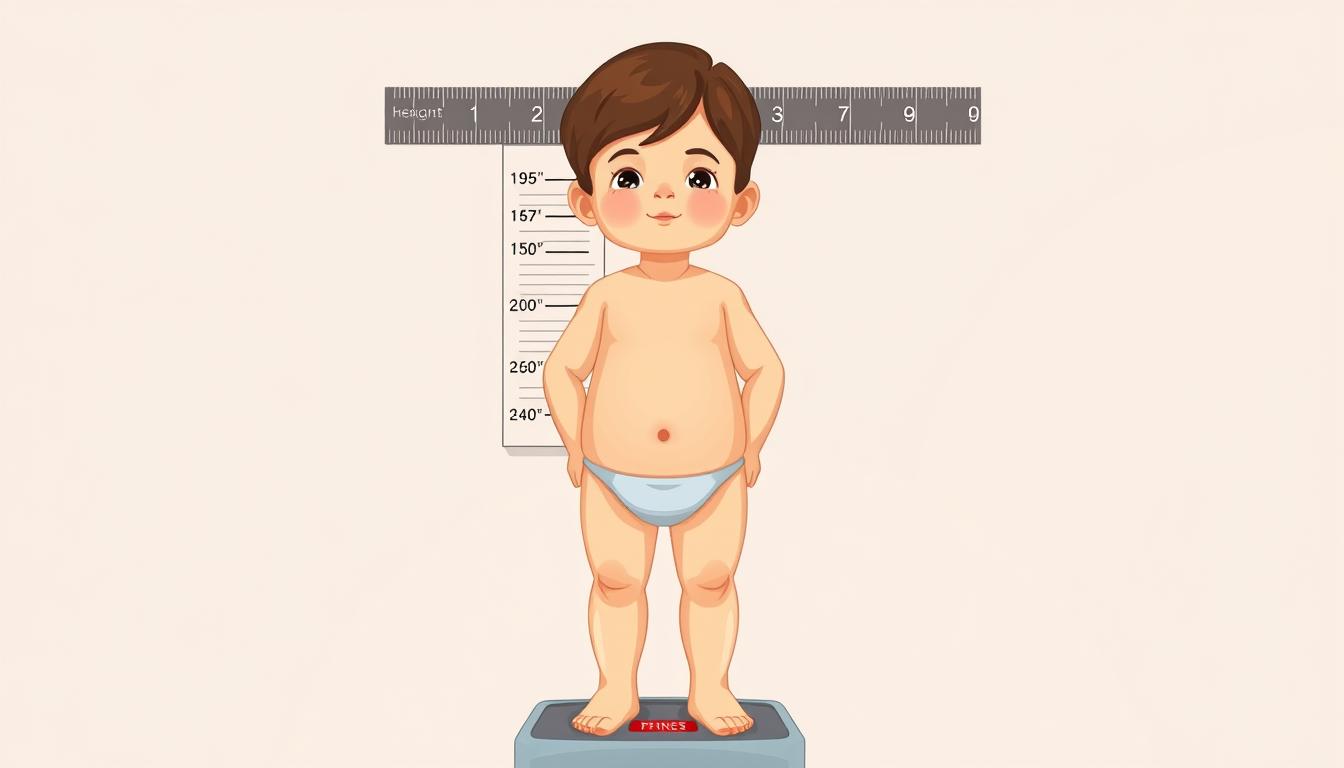What if the secret to understanding your child’s growth isn’t just a number on a scale? While many parents focus solely on pounds or kilograms, tracking healthy development involves precise measurements, age-specific benchmarks, and trusted tools like BMI charts. Let’s explore how combining these elements creates a clearer picture of wellness.
Accurate data is essential. We use guidelines from the CDC and NHS to ensure reliability. For children aged 2–19, recording height in inches and weight in pounds (or metric equivalents) forms the foundation. These figures feed into BMI calculations, which compare growth patterns against peers.
Consistency matters. Regular check-ups help identify trends early. Whether using a BMI calculator or growth charts, our methods prioritize clarity. This approach minimizes guesswork and supports informed decisions about nutrition, activity, and overall health.
Key Takeaways
- BMI charts and growth percentiles offer age-specific insights for children aged 2–19.
- Measure height and weight using standardized units (inches/cm, pounds/kg) for accuracy.
- CDC-approved tools reduce errors when tracking development over time.
- Regular monitoring helps spot potential health concerns early.
- BMI calculators contextualize results using peer-group comparisons.
Understanding Child Growth and Health Metrics
Growth charts tell stories numbers alone can’t reveal. Unlike adult measurements, children’s development requires age-specific comparisons. The CDC emphasizes BMI (body mass index) as a critical screening tool, blending height and weight into a single metric that reflects growth patterns relative to peers.

Role of BMI in Evaluating Child Health
BMI calculations account for age, sex, height, and weight to assess health risks. A child’s result isn’t a standalone number—it’s plotted on growth charts to determine percentiles. For example, a 10-year-old scoring in the 70th percentile weighs more than 70% of peers but less than 30%.
Interpreting Growth Charts and Percentiles
CDC guidelines define ranges clearly:
- Below 5th percentile: Underweight
- 5th–85th: Healthy weight
- 85th–95th: Overweight
- Above 95th: Obese
These categories help identify trends early. Tools like our BMI percentile calculator simplify comparisons using government-approved data. Regular tracking ensures parents and caregivers spot deviations before they escalate.
Remember: Percentiles reflect relative growth, not absolute health. A child consistently at the 60th percentile may be thriving, while sudden jumps warrant attention. Always pair metrics with professional evaluations for full context.
How to calculate ideal weight for a child
Precision in measurement transforms numbers into actionable health insights. Small errors in recording height or weight can alter BMI results significantly. We prioritize techniques that ensure reliable data for tracking growth patterns.

Step-by-Step Measurement Instructions
- Place digital scales on hard flooring—carpets distort readings by up to 10%.
- Remove shoes and heavy clothing. Measure in lightweight attire for consistency.
- Stand straight against a wall with heels together. Use a flat ruler to mark the highest head point.
- Record weight to the nearest 0.1 pound and height to ⅛ inch. Metric users note kilograms and centimeters.
Tips for Accurate Height and Weight Recording
- Measure at the same time daily—morning readings often show slight variations
- Use wall-mounted stadiometers or metal tape measures instead of fabric ones
- Verify scale calibration monthly with a known weight object
Consistent tracking reveals trends better than single measurements. Our BMI calculator converts these figures into percentiles using CDC growth charts. Always share recorded data with health care providers during check-ups.
Managing and Monitoring Child Weight
Turning daily routines into health opportunities requires smart strategies. Families benefit most when tracking progress becomes part of regular habits, not occasional check-ins. Consistent action helps maintain healthy weight ranges while supporting natural growth patterns.
Building Sustainable Health Habits
Balanced meals and movement work best together. The CDC recommends 60 minutes of daily physical activity for children – think biking, dancing, or playground time. Pair this with colorful plates filled with vegetables, lean proteins, and whole grains.
Programs like Go4Fun® show proven results. These family-focused initiatives teach practical skills:
| Program | Key Focus | Duration |
|---|---|---|
| Go4Fun® | Nutrition + Team Sports | 10 Weeks |
| Let’s Move! | Daily Activity Goals | Ongoing |
| 5-2-1-0 Model | Healthy Behavior Framework | Lifestyle |
Monthly height-weight measurements provide crucial feedback. Compare results against growth charts to spot trends early. A 3% shift in BMI percentile might signal time for adjustments.
Small changes create big impacts. Swap sugary drinks for water. Take family walks after dinner. These steps reduce obesity risks while strengthening overall health. Always share tracking data with pediatricians during check-ups for personalized guidance.
Conclusion
Tracking a child’s wellness involves more than occasional check-ups—it’s about creating habits that support lifelong health. Our guide highlights the power of precise height and weight measurements, paired with BMI calculator for kids, to monitor growth trends effectively. These tools simplify comparisons against government-approved percentiles, helping families identify shifts early.
Regular activity and balanced meals remain vital. Combine these with routine re-measurements to maintain a healthy weight range. Growth charts offer insights, but sudden percentile jumps or drops warrant professional input. Always share results with your health care team for tailored advice.
While our resources provide clarity, they complement—not replace—medical expertise. Use them to spark informed discussions about obesity risks or nutrition plans. Stay proactive by revisiting measurement techniques and updated guidelines as children grow.
Empower your family with knowledge. Small, consistent actions today lay the groundwork for thriving teens and resilient adults tomorrow.


